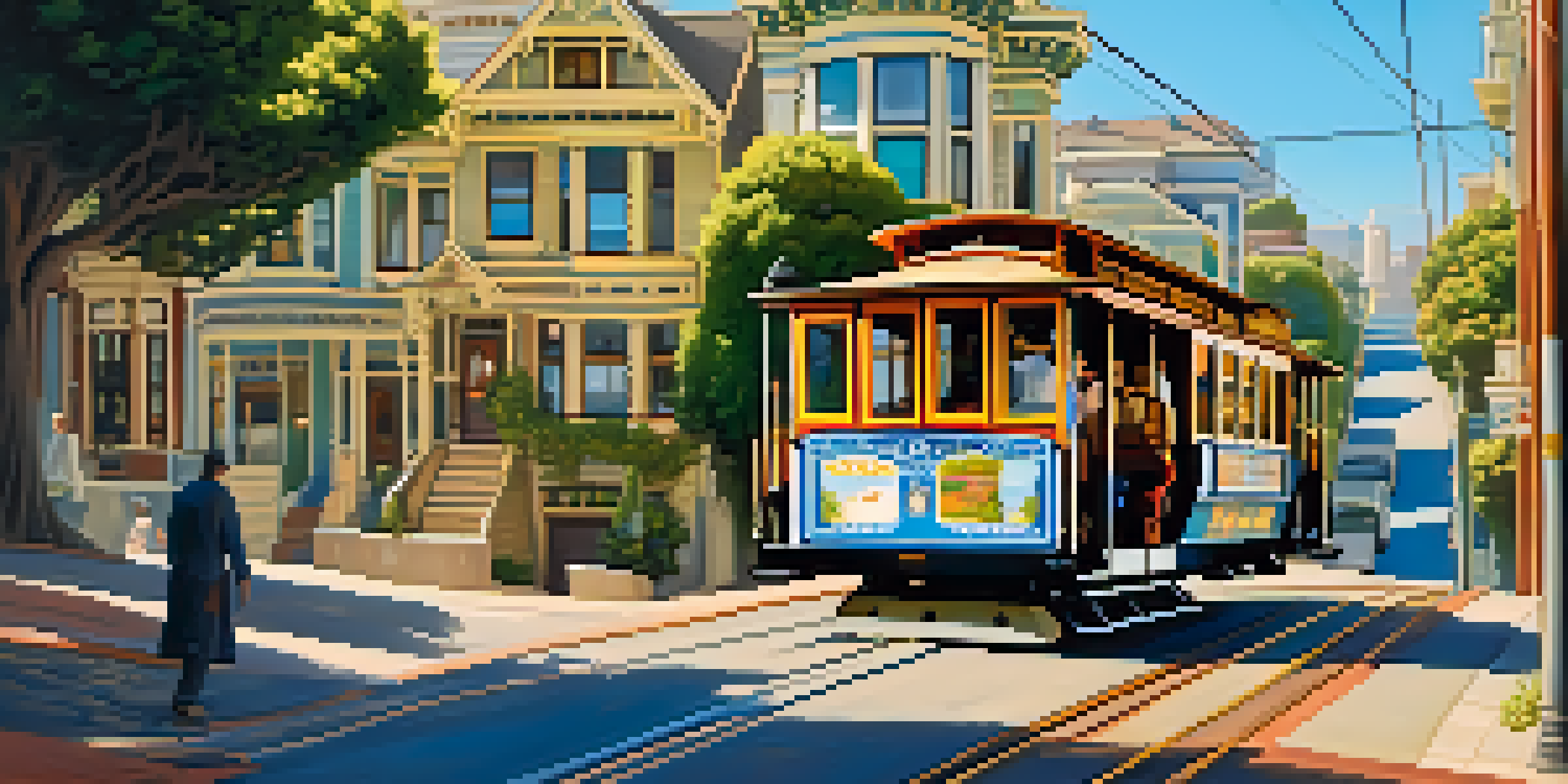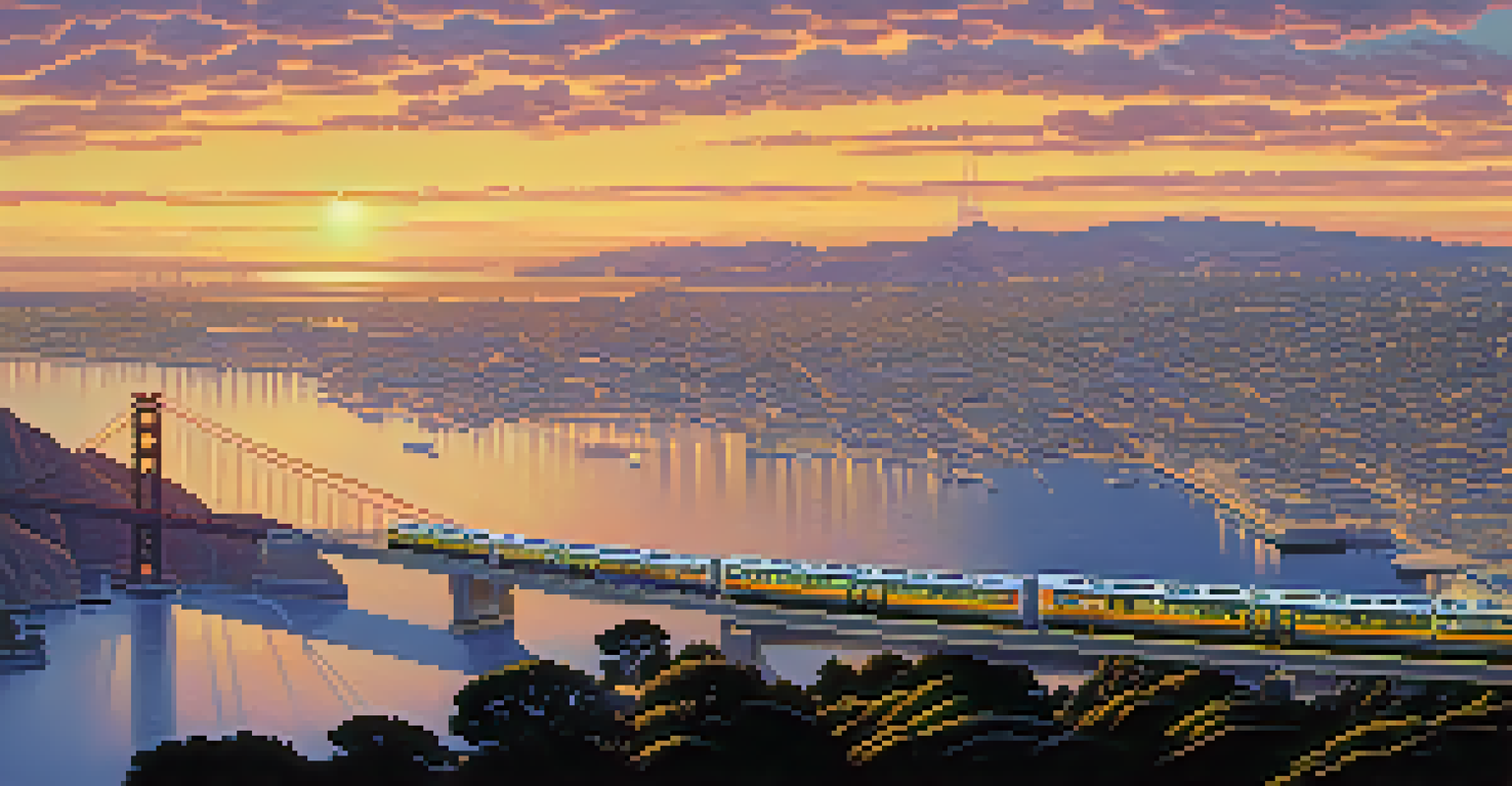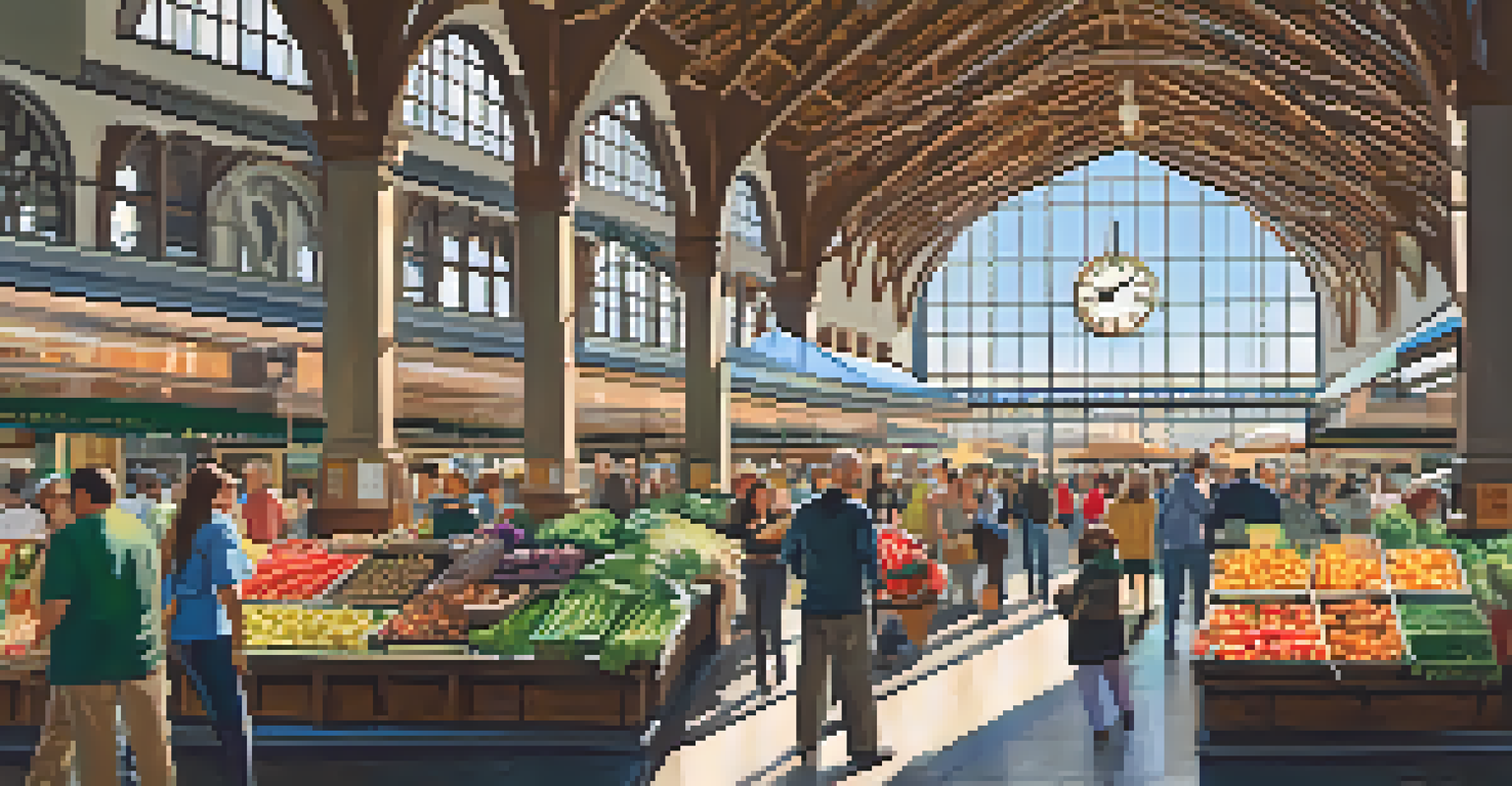Historic Transit Routes: A Glimpse into San Francisco's Past

The Birth of Public Transit in San Francisco
San Francisco's public transit began in the mid-19th century with horse-drawn streetcars. These early vehicles were a game changer, allowing people to travel further and faster through the city's steep hills. By connecting neighborhoods, they played a pivotal role in shaping urban development during a time of rapid growth.
Public transportation is a vital lifeline for our cities and communities, linking people to jobs, family, and opportunities.
As the population swelled during the Gold Rush, the demand for efficient transportation grew. The first cable car line was introduced in 1873, providing a unique solution to the city's challenging topography. This innovation not only made commuting easier but also became a symbol of San Francisco's resilience and ingenuity.
Today, these early transit systems serve as a reminder of the city's rich history. The original routes laid the groundwork for the diverse and complex public transportation network we see today, highlighting how transportation has always been crucial to San Francisco's identity.
The Impact of Cable Cars on City Life
Cable cars transformed San Francisco's landscape, allowing residents to traverse steep hills with ease. They became a beloved feature of the city, drawing tourists and locals alike to experience this unique mode of transport. The sound of the cable car bells ringing through the streets has become synonymous with the San Francisco experience.

These iconic vehicles also influenced social dynamics within the city. They connected affluent neighborhoods with working-class areas, fostering a sense of community among diverse populations. This interaction highlighted the importance of accessibility in urban planning and social equity.
Public Transit Shapes City Identity
San Francisco's public transit system, from horse-drawn streetcars to modern BART, has played a crucial role in shaping the city's development and cultural heritage.
Even today, riding a cable car is more than just a means of getting from point A to point B; it's a nostalgic journey through history. The cable car system remains a vital part of San Francisco's cultural heritage, reminding us of the city's past while continuing to serve its residents.
The Evolution of Streetcars Through the Decades
As technology advanced, streetcars began to replace horse-drawn vehicles, leading to the establishment of the first electric streetcar line in 1892. This shift not only modernized public transit but also made it more efficient and cost-effective. The streetcar system quickly grew, providing reliable transportation for thousands of daily commuters.
The best way to predict the future is to create it.
Streetcars facilitated the expansion of San Francisco's neighborhoods, encouraging urban sprawl and the development of new residential areas. Many neighborhoods, such as the Mission District and Outer Sunset, owe their growth to the accessibility provided by streetcars. This proliferation also paved the way for the rise of local businesses along transit routes.
However, as automobiles became more popular in the mid-20th century, streetcars faced challenges that led to their decline. Despite this, the legacy of streetcars can still be seen in the city’s modern transit systems, which continue to reflect the balance between innovation and historical preservation.
The Rise of BART and Its Significance
In the 1970s, the Bay Area Rapid Transit (BART) system emerged as a response to the growing need for efficient regional transportation. This innovative system connected San Francisco with surrounding areas, allowing commuters to travel across the Bay with ease. BART's introduction marked a significant shift towards modern public transportation in the region.
BART also played a crucial role in shaping the economic landscape of the Bay Area. By connecting cities like Oakland, Berkeley, and beyond, it facilitated job growth and allowed diverse communities to thrive. This accessibility helped transform San Francisco into a hub for technology and innovation, contributing to its current status as a global city.
Cable Cars Foster Community Connection
The introduction of cable cars not only transformed transportation but also connected diverse neighborhoods, promoting social equity and community interaction.
The impact of BART extends beyond mere transportation; it symbolizes the interconnectedness of the Bay Area. As we continue to navigate the challenges of urban growth and sustainability, BART serves as a reminder of the importance of investing in public transit for a more inclusive future.
Historic Landmarks Along Transit Routes
As you explore San Francisco's historic transit routes, you'll encounter numerous landmarks that tell the story of the city's past. From the ornate Victorian houses of Alamo Square to the bustling Ferry Building, each site reflects a unique aspect of San Francisco's history. These landmarks serve as visual reminders of how transit shaped the city’s development.
Many of these historic sites are easily accessible via public transportation, making it simple for residents and visitors to appreciate the city's heritage. For instance, taking a cable car to Lombard Street not only provides a thrilling ride but also offers stunning views of one of the city’s most iconic streets. This blend of history and transit creates an enriching experience.
Exploring these landmarks via transit routes encourages a deeper understanding of the city’s cultural tapestry. Each stop on a transit line has its own story, highlighting the interplay between transportation and urban development, and inviting us to reflect on the rich history of San Francisco.
Challenges and Changes in Transit History
Throughout its history, San Francisco's transit system has faced numerous challenges. Economic downturns, changing technologies, and shifting population dynamics have all played a role in shaping the transit landscape. Each challenge prompted changes that aimed to meet the evolving needs of the city's residents.
For instance, the decline of streetcars in favor of buses in the mid-20th century represented a significant shift in priorities. While buses offered flexibility, they also contributed to traffic congestion and pollution, raising questions about sustainability. These issues have sparked ongoing discussions about the future of public transit and the need for greener solutions.
Future Focus on Sustainable Transit
San Francisco is embracing sustainable transportation solutions, including electric vehicles and improved public transit services, to meet the needs of its growing population.
Today, as San Francisco grapples with these challenges, the city is embracing innovative approaches to public transit. Investments in electric buses, bike lanes, and pedestrian-friendly initiatives reflect a commitment to creating a more sustainable and efficient transit system for generations to come.
The Future of Transit in San Francisco
Looking ahead, the future of transit in San Francisco is filled with both opportunities and challenges. As the city continues to grow, there’s an increasing focus on sustainable transportation options. Electric vehicles, expanded bike networks, and improved public transit services are all part of the vision for a greener city.
Moreover, technology is playing a crucial role in shaping the future of transit. Innovations like mobile ticketing and real-time tracking are making public transportation more user-friendly and accessible. These advancements have the potential to enhance the overall commuting experience and encourage more people to choose public transit.

Ultimately, the future of San Francisco's transit system will depend on collaboration among city officials, transit agencies, and the community. By working together, we can ensure that the transit routes of tomorrow honor the rich history of the past while meeting the needs of a diverse and evolving population.